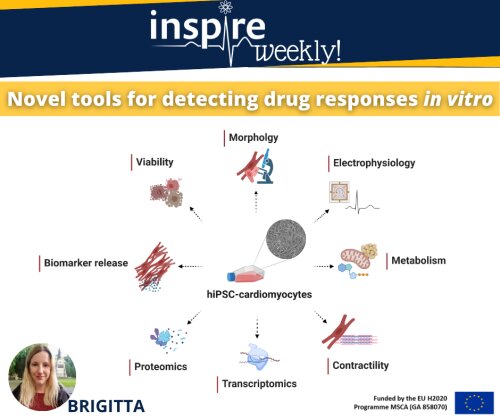27/10/2021 - Brigitta (ESR #1)

Cardiotoxicity after acute or chronic exposure to compounds is still one of the most common adverse drug side-effects. Changes in electrophysiological properties of cardiomyocytes, leading to arrhythmia are amongst the most common mechanisms. Predictive models to precisely determine the risk of these events with high specificity and sensitivity are lacking. Human induced pluripotent stem derivatives such as cardiomyocytes (hiPSC-CMs) present novel alternatives for drug safety assessment.
For detecting electrophysiological changes in hiPSC-CMs patch-clamp techniques – allowing high precision but low-throughput – can be utilized. More scalable options include multi electrode array (MEA) recordings and optical mapping of voltage sensitive dyes. Disruption in the ATP-generating pathways and the state of mitochondrial network also significantly impact on cardiac health. Thus, monitoring drug-induced dysfunction in these processes via measuring oxygen consumption rate (OCR) and extracellular acidification rate (ECAR) as well as dyes targeting mitochondrial membrane potential and oxidative state contribute to evaluating cardiac safety. Moreover, a number of functional assays have been established for measuring changes in contractility and calcium handling in single-cells, 2D monolayers and 3D constructs of hiPSC-CM (co)cultures.
Big data science complemented by new generation analytic techniques for transcriptomics, proteomics and biomarker identification can be coupled to phenotypic assays to reveal underlying mechanisms of toxicity or be used as predictive tools. Studying viability and more detailed morphological features, utilizing high content imaging methods for dyes selectively staining specific organelles or cellular membranes can shed light on structural toxicity. Readouts from the above-mentioned assays individually or as a combination can serve as building blocks of in vitro cardiac safety scores with translational value to the clinic.
As part of my PhD project, we will focus on further validating and standardizing protocols for several of these assays.